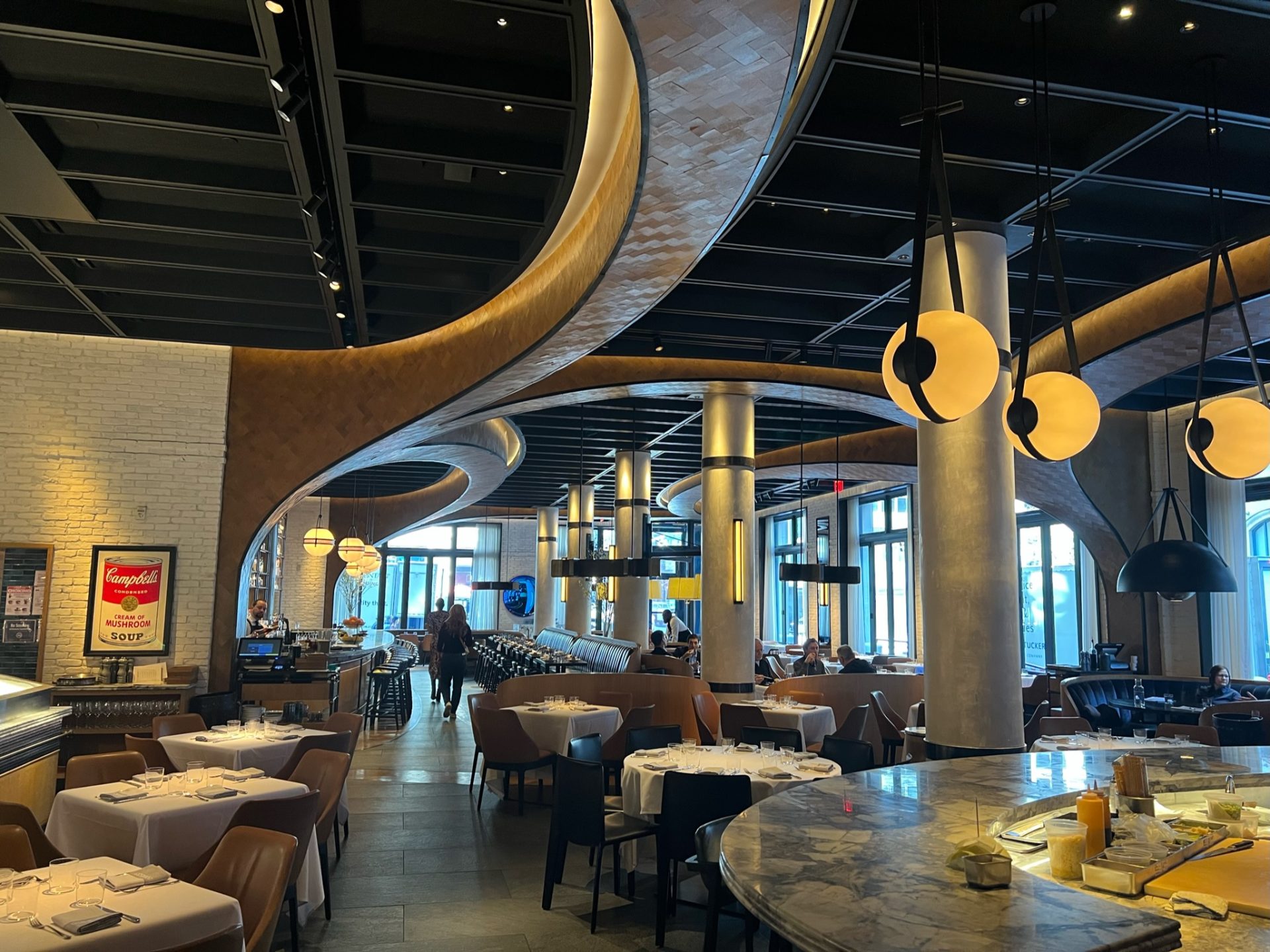Romantic Restaurants Islamabad: Ideal Dining Locations for Pairs
Wiki Article
Savor Authentic Oriental Cuisine With a Pan-Asian Spin for a Culinary Journey
Starting a culinary journey via authentic Oriental food, improved with a Pan-Asian twist, offers a special opportunity to discover the abundant tapestry of tastes that define the area's diverse culinary traditions. This experience welcomes you to relish the splendid equilibrium of preferences-- pleasant, salted, spicy, and sour-- integrated by fragrant herbs and seasonings. Imagine the cutting-edge combination of Thai curry and ramen or the unanticipated pleasure of sushi burritos. As you consider these luring meals, consider the social narratives and historical impacts that form them, each bite providing a tale waiting to be discovered.
Checking Out Pan-Asian Flavors
In the world of international gastronomy, Pan-Asian food stands out for its amazing variety and the unified interplay of tastes from various Asian cultures. This cooking approach commemorates the abundant customs and unique ingredients found throughout the continent, producing a tapestry of tastes that is both interesting and satisfying. Trick to Pan-Asian cuisine is its capability to stabilize different tastes-- sweet, salty, spicy, and sour-- while highlighting the freshness and top quality of each ingredient.From the umami-rich soy sauce of Japan to the fiery chili peppers of Thailand, Pan-Asian food uses a comprehensive palette of flavors. These components are commonly integrated in inventive ways, improving dishes with layers of intricacy. For instance, the use of fragrant herbs such as lemongrass and cilantro, typical in Vietnamese and Thai food, includes a rejuvenating brightness to dishes, while the unification of coconut milk provides a creamy, abundant structure.
The focus on fresh fruit and vegetables and fragrant seasonings makes certain that each dish is not only a feast for the palate yet also for the senses. Pan-Asian cuisine invites diners to embark on a cooking trip, checking out the vast and varied landscapes of Oriental gastronomy with every bite.
Blend Dishes to Try
While Pan-Asian cuisine is celebrated for its traditional tastes, the modern-day cooking landscape is significantly welcoming blend dishes that mix these classic elements with impacts from other regions. This cutting-edge strategy not only honors the rich heritage of Eastern cookeries however likewise introduces unique taste experiences that attract modern tastes.
An archetype of such a combination recipe is the Korean-Mexican taco, where marinated bulgogi beef is wrapped in a cozy tortilla, covered with kimchi and a zesty gochujang-infused salsa. This mix marries the vibrant, full-flavored tastes of Korea with the lively, fresh elements of Mexican food. Likewise, sushi burritos have gotten popularity, joining together the fragile creativity of Japanese sushi with the hearty, hand-held benefit of a burrito, frequently featuring combination active ingredients like tempura shrimp and avocado with a drizzle of wasabi mayo.
Another noteworthy dish is Thai curry ramen, which instills the luscious, fragrant flavors of Thai curry into the soothing broth of traditional Japanese ramen, developing a harmonious blend that entices the senses. These blend recipes prolong beyond simple uniqueness; they stand for a culinary discussion between societies, encouraging expedition and advancement on the planet of Pan-Asian food.
Crucial Active Ingredients and Flavors
To really appreciate Pan-Asian cuisine, one must recognize the vital active ingredients and flavors that form its structure. This varied culinary design draws from a rich tapestry of Oriental practices, using a harmonious mix of structures and tastes. Key ingredients consist of soy sauce, fish sauce, and oyster sauce, which present a tasty umami deepness necessary to Eastern recipes. Complementary to these are rice vinegar and mirin, providing a delicate acidity and sweetness.visit our website Fragrant elements are essential, with garlic, lemongrass, and ginger being ubiquitous throughout numerous Pan-Asian dishes. These components supply a great smelling base that improves the intricacy of flavors. Seasonings such as celebrity anise, cardamom, and cinnamon present warmth and character, echoing influences from areas like China and India.

Cooking Methods and Tips
Understanding the art of Pan-Asian cuisine requires knowledge with its unique cooking methods, each adding to the vibrant tapestry of tastes waffle house near me this culinary practice is commemorated for. Central to these approaches is the stir-fry, a quick cooking technique that protects the dietary stability and brilliant colors of components. Making use of a frying pan, the stir-fry approach enables even heat distribution, necessary for achieving the characteristic structure and flavor equilibrium of Pan-Asian recipes.One more basic method is steaming, particularly widespread in Chinese cuisine. This mild technique preserves the all-natural flavors and nutrients of components, making it excellent for fish and shellfish and vegetables. Dumplings, a precious staple, usually benefit from steaming, leading to soft, succulent textures.
Barbecuing, also integral, gives smoky depths to dishes such as Korean bulgogi or Japanese yakitori (asian fusion restaurant). This strategy frequently involves seasoning ingredients, enabling tastes to penetrate deeply prior to food preparation over an open fire or warmer
Finally, grasping the art of balancing tastes-- pleasant, sour, salty, bitter, and umami-- is vital. Effectively layering these elements can boost a dish from ordinary to extraordinary, providing a complicated and pleasing cooking experience that symbolizes the essence of Pan-Asian food.
Dining Experiences Worldwide
Around the world, Pan-Asian food uses an exceptional eating experience, celebrated for its abundant tapestry of flavors and lively presentations. This culinary sensation has gone beyond cultural boundaries, capturing the hearts and tastes buds of food lovers hop over to these guys worldwide. In multicultural cities fresh York, London, and Sydney, Pan-Asian dining establishments function as fusions where cooking practices from Thailand, Japan, China, and past converge, giving diners with an eclectic mix of recipes that highlight the region's variety.The international appeal of Pan-Asian food depends on its capability to use both credibility and advancement. Cooks skillfully marry conventional ingredients such as lemongrass, soy sauce, and miso with contemporary strategies, causing dishes that are both refreshingly new and familiar. This combination allows diners to start a culinary journey that values heritage while accepting modernity.
Moreover, dining experiences are elevated through thoughtfully designed settings that mirror the ethos of Pan-Asian aesthetics. From minimal Japanese-inspired insides to vivid Thai-themed rooms, each restaurant uses an unique ambiance that matches the cooking offerings. Because of this, clients are not simply taking in a dish yet partaking in a cultural experience, making Pan-Asian dining an absolutely worldwide phenomenon.
Final Thought
The exploration of Pan-Asian food offers an extensive understanding of the detailed interaction of tastes and cooking customs throughout Asia. By accepting combination recipes such as Thai curry ramen and sushi burritos, the culinary journey not only highlights the flexibility of typical ingredients however also showcases ingenious contemporary techniques. This gastronomic experience, improved by essential seasonings and cooking techniques, supplies an one-of-a-kind possibility to appreciate the multiculturalism and culinary virtuosity that define Pan-Asian cuisine on a global range.Embarking on a culinary trip via authentic Eastern cuisine, boosted with a Pan-Asian spin, offers a distinct opportunity to discover the rich tapestry of tastes that define the region's diverse cooking practices.In the world of global gastronomy, Pan-Asian food stands out for its amazing variety and the harmonious interaction of tastes from various Oriental societies. Secret to Pan-Asian cuisine is its capability to balance contrasting flavors-- pleasant, salty, spicy, and sour-- while highlighting the freshness and top quality of each ingredient.

Report this wiki page